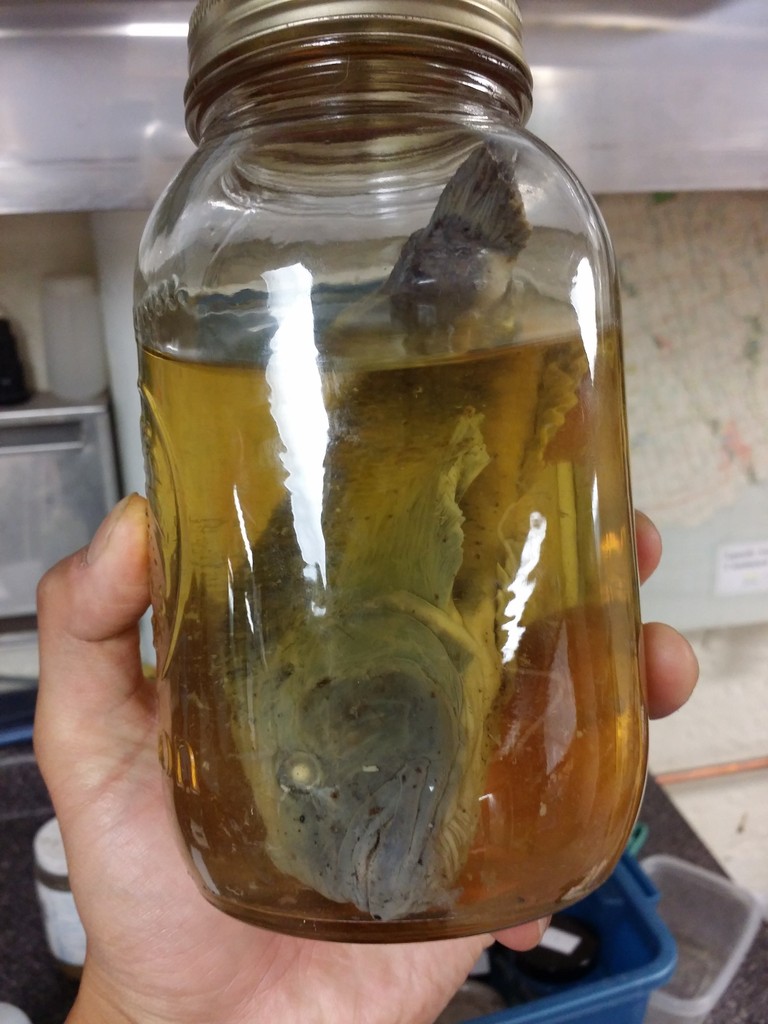-
Posts
148 -
Joined
-
Last visited
Content Type
Events
Profiles
Forums
Store
Posts posted by danjang
-
-
Former Ontario record round goby

-
Looks like Hugh Benhaad!
-
Someone posted a link this MNR discussion paper on another board that talks about the new fee. Thought it would be useful to post it here.
It's on page 20.
Basically, the revenue stream is not keeping up with the costs. They are charging the $2 to help pay for processing the licenses.
Sure it's only $2, but that's not the point is it?
My issue is that government tends to be incredibly inefficient and stagnant. Charging more money or taxes or fees is the easy way out. At least they are exploring new options to increase revenue as per that document. Of course, reducing costs and increasing efficiency should be the priority. Something that all levels of government fail to accomplish.
That report highlighted three main drivers of the reduced revenue experienced by the special purpose account. The other two that you didn't mention are HUGE!
1. The decline of the fishing population. In ~33% of the 2010 fishing license holders did not renew in 2011, a significant blow to the money generated.
2. Baby boomers reaching retirement age. Much like the CPP issue, the number of people reaching that magic number will continue to increase. Combine that with the younger generations being less inclined to enjoy the natural resources, we're going to be in big trouble there.
3. The MNRF is not doing enough to recoup costs. Licensing is not covering the cost of managing the fisheries. This finding was part of the Drummond report, a liberal initiative.'
In addition, the increasing threat of climate change, invasive species and disease will continue to put a strain on fisheries management.
-
Hopefully I'm not giving too much away
 . Those are definitely atlantics.
. Those are definitely atlantics. -
Brant conservation area in brantford. Close and filled with smallies.
-
The gauge is more important than the size. Get extra strong hooks. They are thicker and meant for the larger fish. Also I find cheaper brands bend or break more often.
-
3-4 inch non floating is what I use. I don't care much for the gulp ones. Smells terrible! Regular plastic ones work fine.
-
Chinooks will be very hard on the cheapest reels. Just something to keep in mind. The cheapest decent newbie setup would be around the 150 new mark. I have a 10 year old shimano Sedona that still works for chinnoks.
-
My smart phone. The coolest fishing gadget ever!
GPS - Explore new areas, find my way back to the car/boat launch, find the nearest Timmies/tackle shop!
send/receive photos
send/receive fishing related calls
Charge my spoons with the flash.
Look up techniques on the water - When I'm not catching anything I'll try anything.
Look up knots - I always forget lesser used knots like the nail knot.
Look up water levels and fishing reports.
Weather radar.
Basically the entire knowledge base of the internet in the palm of my hand.
-
The mortality rates in the study were high because the experiment used small hatchery rainbow trout. Less than a pound. On top of that, they had been subjected to surgery a day or two prior to the experiment.
Experimental data (numbers) in a lab setting should NEVER be used to directly measure the natural world.
The study simply demonstrates that exposure of fish to the air after a fight is bad and it can lead to mortality. We all know this already. The article is written to suggest that many mature steelhead die. Some may, but not the the same numbers as the experimental trout.
-
Google maps my friend. Look for any parks on water.
-
The other eastern creeks are full of them. I don't see why Duffins wouldn't be either.
-
We see a a lot of chinooks because they have very good natural reproduction rates. Not only do you see stocked fish, but also wild.
The atlantics have not yet had time to establish themselves. It will be slow, but provided that the rivers remain the same, they should be able to thrive once again. I've personally seen and caught a few grilse on the credit. They are returning.
In order to create a fishery, time is required to investigate what strains work best. Stocking in large quantities gives a better idea of what the atlantics are doing and research what can be adjusted to ensure their success.
Not 100% sure, but I don't think Bowmanville is part of the current atlantic salmon program. If you caught any, they might have been strays!
Let's also not forget that this stocking program wasn't made just for fishermen. It's a natural heritage project regarding a game fish.
-
At the risk of a serious sidetrack (my apologies) there are thousands of the little buggers in the 4"-8" range up in the headwaters... Do we know where the snag is? Are they not leaving like they should or simply not coming back? Dying in the lake? Cormorant food?
I wonder if our rivers are anywhere near healthy enough to sustain a spawning population of Atlantics...I'm all for restoring the fishery, but I don't believe dumping a million fish a year into a few rivers is going to do it.
Something is going on in the lake.
-
I'm pretty sure a lot of foods have nasty ailments in our grocery stores. Fish we catch here too! Very common to have worms and cysts. If we only ate things that were 100% healthy we'd have nothing on our plate.
I would be more concerned about the possible spread of the virus to other salmonids in unaffected populations. If this is transported throughout the country, we could have a problem!
-
I saw atlantics once at the grocery store!!!!!!

-
There's been reports of American Eel in the Rideau canal system too. They also live very long. Given enough time, an eel can make it's way anywhere there is access. Getting back to spawn however....
-
This must be an ad for northern Ontario tourism. I'm sold. Where do I throw my money at?!
-
It depends on what # line you'll be using. A 4000 reel will hold a lot of line. Casting distance won't be affected unless you underspool the reel. In terms of cranking, it's probably negligible. I have 4 2500 and they hold more than enough line for chucking spoons for salmon. A 4000 reel will just limit it's capabilities and you'll be forced to spend more money on line.
-
Let's take a look at how all this naming happened. Or at least how I think it happened!
Atlantic Salmon and the Brown Trout were originally from Europe, where the center of the world was a while back. There are more species of trout but I'm sticking to these as they are found here.
Atlantic salmon were wildly known to migrate, whereas the trout were known to remains in rivers(although this isn't always the case).
These provided the basis of newly found species in the far east and the new world.
Coming to North America, we came across some Atlantic salmon and two other species. The two species look like a salmonids but they tend to behave much like a brown trout, either remaining in the rivers or in the lake(again not always the case). Here we get Lake Trout and Brook Trout.
As european explorers make their way around the globe, they finally make it to the pacific ocean where they encountered a multitude of salmonids. The pacific salmon all behaved similarly to the atlantic salmon and therefore obtained that common name.
Rainbow trout is an oddball. It was originally classified in the genus Salmo which means that perhaps the anadromous steelhead was first encountered and documented. I suspect that perhaps the migratory steelhead looked so dissimilar from the resident that it adopted the steelhead salmon name.
Of course through the advancements in biotechnology, we can now classify species through DNA analysis. HOLY CRAP! Atlantic salmon and brown trout are now in the same genus leading to the mistaken naming of all of the newly found species.
In a similar mishap of European nomenclature, ever wonder how penguins got their name?! Well I'll tell ya!
Although it isn't 100% confirmed, they were named after a very similar bird that was once found in in the north atlantic (just like the atlantic salmon!) Pinguinnis is the Genus of the great auks. As the James Cook made his way down to Antartica they came across a remarkably similar bird that was found back home. Naturally, if it looks like Pinguinnis it must be the same.
This is why common names don't matter. I can call my steelhead a salmon or a trout. It was mistakenly classified. Oncorhynchus mykiss would be the best way to describe the fish. It's also good to keep in mind that even in the scientific world, the classifications of these animals are ever changing with new discoveries.
-
I had some smoked salmon from a grocery store this weekend (that was delicious!), it said Norwegian Steelhead Salmon. So I thought I'd start there
 So steelhead salmon and trout is the same thing? http://www.ats-sea.agr.gc.ca/sea-mer/4811-eng.htm
So steelhead salmon and trout is the same thing? http://www.ats-sea.agr.gc.ca/sea-mer/4811-eng.htmI figured that with out a boat I'd only be able to do it in the fall...
Common names are terrible to use as they differ from place to place! Who knows what kinda salmonid you had lol.
Anyways yeah pier fishing in the fall. Catch em fresh. Stick to the smaller range of fish. Cut the fat if you can, don't eat the eggs and do not eat them raw!!
-
Thanks for the post! That price pushed me to finally get it done.
-
Rudds have red or orange fins, so it's most likely a rudd. They could hybridize though!
-
I had caught one on Rainy River last year that I though was a sea lamprey, it was about 12". I called the MNR and they asked me to preserve it so they could identify it. Turn out it wasn't a sea lamprey and was indeed native.
The size is an indication maybe, but not a sure fire way to identify the species.
The sea lamprey is the only lamprey with 2 separated dorsal fins. 3 of them have 1 dorsal and the American brook lamprey can be tricky, it has a small membrane attaching the two.
Most likely a native, non-parasitic American Brook Lamprey, however, Sea Lamprey were reported upstream of Norval last year. Very tough to tell the juveniles apart but if you catch one over 10" it is a sea lamprey.
Jon
Curious, adults that hitch hiked or evidence of successful spawning?



Brown or Atlantic
in General Discussion
Posted
Brown. Large mouth, looks like heavy spotting on the dorsal fin, caudal peduncle isn't as narrow as it should be. I also find that clean atlantics have a prominent black edging on the tail fin.